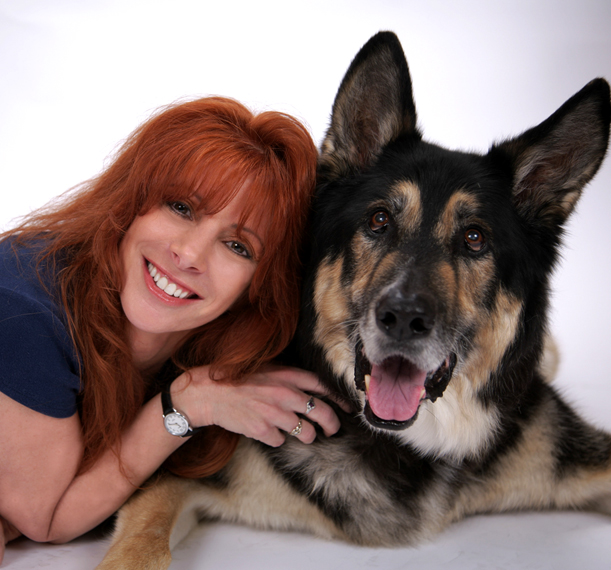The Fearful Dog’s Blog is happy to introduce you to our guest blogger, Nicole Wilde CPDT, RM. Nicole has worked with fearful dogs for years and her book, Help for Your Fearful Dog is a must read for anyone working with a fearful dog. I was attending one of Nicole’s seminars recently, it happened to be my birthday, and a friend gifted me with a copy of Nicole’s latest book Energy Healing For Dogs, which would be another great topic to include on this blog. I hope you enjoy and I know you’ll learn a lot from the following post.
Five Golden Rules for Working with Fearful Dogs by Nicole Wilde
 Having worked with hundreds of shy, anxious, and fearful dogs over the years in training, shelter work, rescue, and yes, even in my own home, it’s become obvious that regardless of the type of fear issue, certain precepts apply. Whether a dog is frightened of a family member, a thunderstorm, or other dogs, keep these five rules in mind when implementing your behavior modification program:
Having worked with hundreds of shy, anxious, and fearful dogs over the years in training, shelter work, rescue, and yes, even in my own home, it’s become obvious that regardless of the type of fear issue, certain precepts apply. Whether a dog is frightened of a family member, a thunderstorm, or other dogs, keep these five rules in mind when implementing your behavior modification program:
Employ good management. For example, if your dog is afraid of the vacuum cleaner, for the length of your desensitization program, don’t turn it on when he’s close by (until you’ve build up to that step). Take him for a walk while someone else vacuums the house (ladies, put your husbands to work!) or put him out in the yard while you vacuum. Ideally, keep your dog from encountering the trigger for at least two weeks before beginning your behavior modification program. That way the stress hormones, which can circulate for up to a few days in the body even after that initial adrenalin rush has subsided, will be at low levels and the dog will be as calm as possible.
Always work under the dog’s threshold. It’s fine for the dog to notice the trigger, but you don’t want him to have a major reaction to it. If you were doing a desensitization and counter conditioning program, ideally you would start feeding treats as soon as your dog noticed the scary thing, not after he’d started barking or trying to run away.
Progress in teeny, tiny increments. It’s very tempting to move forward rapidly when you’re excited about the progress your dog is making, whether it’s about holding a stay or being less frightened of other dogs. Don’t do it! If you push your dog too far too fast, you risk having to go back to square one and start over. Progressing in small increments will allow your dog to feel good about the trigger and secure during the process.
Put the power in the dog’s paws. Let the dog decide whether to approach the big, scary thing rather than forcing him. For example, the “touch” command (also known as targeting) is excellent for fear of objects, because you can teach a dog to touch her nose to your hand, and then transfer that to the object. The dog can then approach the object of her own free will, as she is comfortable. The extreme opposite of putting the power in the dog’s paws is flooding, a technique that forces the dog to deal with the trigger in massive doses—to become immersed in it. Although the technique has been used successfully in laboratory tests, and it could potentially work with your dog, the chances that you are going to traumatize your dog instead of helping are very high. Leave flooding in the lab and let your dog feel confident, and trusting of you.
Be an advocate for your dog. Let’s say your dog is afraid of people. You’re out on a walk, and someone approaches as if to pet him. It’s your job to stop that person. Stand in front of your dog, put your palm out as if to say, “Halt!” and relay in no uncertain terms that you’d rather they not pet your dog. It is especially important for a dog with fear issues to feel you will keep him safe under any circumstances.
Nicole Wilde is the author of eight books including Help for Your Fearful Dog. She teaches seminars around the world on canine behavior, and runs Gentle Guidance Dog Training in southern Calfornia. You can follow Nicole on Twitter at @NicoleWilde

